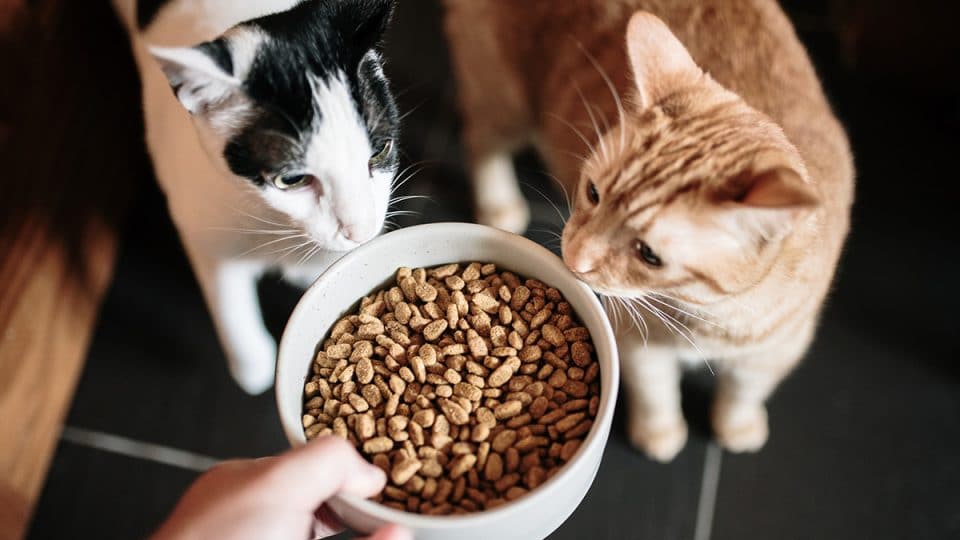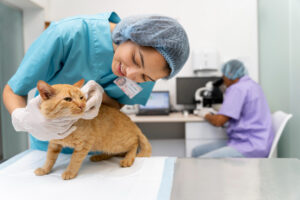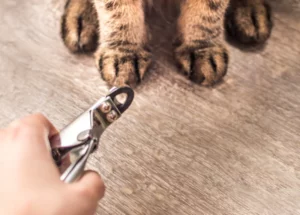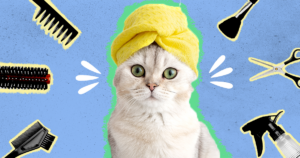to suggest
Choosing the right cat feeding method is crucial to the health of your feline friend. As a responsible cat owner, you want to provide your pet with a balanced diet that meets their unique needs. Among the wide range of cat food options, the debate between cooked and raw food gets a lot of attention. Let’s look at the nuances of each method so you can make an informed decision.
Learn more about cooked cat food
Benefits of Cooked Cat Food
Improve digestibility:
Cooked cat food improves digestibility and is gentler on your cat’s stomach. The cooking process breaks down complex proteins, making them easier to absorb.
To resolve security issues:
One of the main benefits of cooked cat food is the reduced risk of bacterial contamination. Cooking eliminates harmful pathogens and provides safer meals for your furry friends.
Popular recipes for cooked cat food
Chicken-rice mix:
Pairing lean chicken with rice is a simple and nutritious option that provides a well-balanced meal rich in protein and carbohydrates.
Fish-sweet potato mixture:
For seafood-loving cats, a mixture of fish and sweet potatoes can provide essential nutrients while satisfying their taste preferences.
Discover raw cat food
Benefits of a Raw Food Diet
Nutrient retention through minimal processing:
Raw cat food enthusiasts believe that minimal processing retains more nutrients and claim it better suits a cat’s natural diet.
Possible disadvantages and safety measures:
While raw foods have their benefits, it is also critical to address potential drawbacks, such as the risk of bacterial contamination. Implementing safety measures, such as sourcing high-quality ingredients, is critical.
DIY raw cat food recipes
Raw meat soup:
The mix of raw meat, organ meat and bones provides a balanced and biologically appropriate meal for your cat.
A balanced meal with bones:
The bone components ensure that your cat gets the calcium and phosphorus needed for bone health.
health considerations
Understand your cat’s nutritional needs
Before choosing a cat feeding method, it is crucial to understand your cat’s nutritional needs. Consult your veterinarian to determine the ideal balance of protein, fat and carbohydrates for your cat’s age, weight and health.
Common health problems are solved in two ways
Allergies and sensitivities:
Both cooked and raw meals can be tailored to specific allergies or sensitivities. Identifying and avoiding problematic ingredients is essential.
Weight management:
Whether cooked or raw, controlling your cat’s calorie intake is crucial for weight management. Adjust portion sizes to meet your cat’s energy needs.
cost and convenience
financial analysis
Cooked and raw:
Preparing meals for your cat at home may seem cost-effective, but raw food can be just as beneficial when sourced and prepared properly.
Time commitment:
Think about the time it takes to prepare a home-cooked meal, versus the time it takes to process and store the ingredients. Choose a method that suits your schedule.
Transition skills
Cat Transition Guide:
Changing your cat’s diet requires a gradual transition. Mix new foods with old foods and slowly increase the ratio over the course of a week to prevent indigestion.
Common challenges and solutions:
Be prepared for reluctance or digestive problems during menopause. Patience and perseverance are the key words; if the problem persists, consult your veterinarian.
Expert opinion
Veterinary insights
Dr. Emily Thompson, DVM:
“Cooked food provides some level of safety, but raw food can also provide adequate nutrition if carefully planned. Consult your veterinarian to determine the best approach for your cat’s unique needs.”
A pet nutritionist’s perspective
Sarah Jackson, Certified Pet Nutritionist:
“Every cat is an individual and their nutritional needs may vary. While a raw diet may appeal to your cat’s instincts, cooked food can provide a safer option without compromising nutritional value.”
real story
Personal experiences of cat owners with cooked food
Jan and Baard:
“The switch to a cooked diet has eased Whiskers’ digestive problems. Home-cooked meals are not
The choice depends on your cat’s personal needs and your preferences as a pet owner. Both methods have their benefits, and with proper planning and consideration you can provide your feline companion with a healthy and satisfying diet.
Frequently Asked Questions
Can I mix cooked and raw food for my cat?
Yes, that’s possible! Many cat owners successfully combine these two methods to create a balanced and varied diet for their cats.
How do I ensure that my cat gets all the necessary nutrients from a home-cooked diet?
Consult your veterinarian or a certified pet nutritionist to develop a balanced diet that meets your cat’s specific nutritional needs.
Are there any specific precautions when handling raw meat in cat food?
Handle raw meat with care to avoid contamination. Wash your hands thoroughly, use separate utensils and be sure to clean all surfaces after preparation.
What are the signs that my cat is not adapting well to a new diet?
Vomiting, diarrhea, or a sudden lack of interest in food can indicate a problem. If these problems persist, consult your veterinarian.
Can I consult my vet for personalized cat food recommendations?
Absolute! Your veterinarian can make recommendations tailored to your cat’s health, age and specific nutritional needs.



